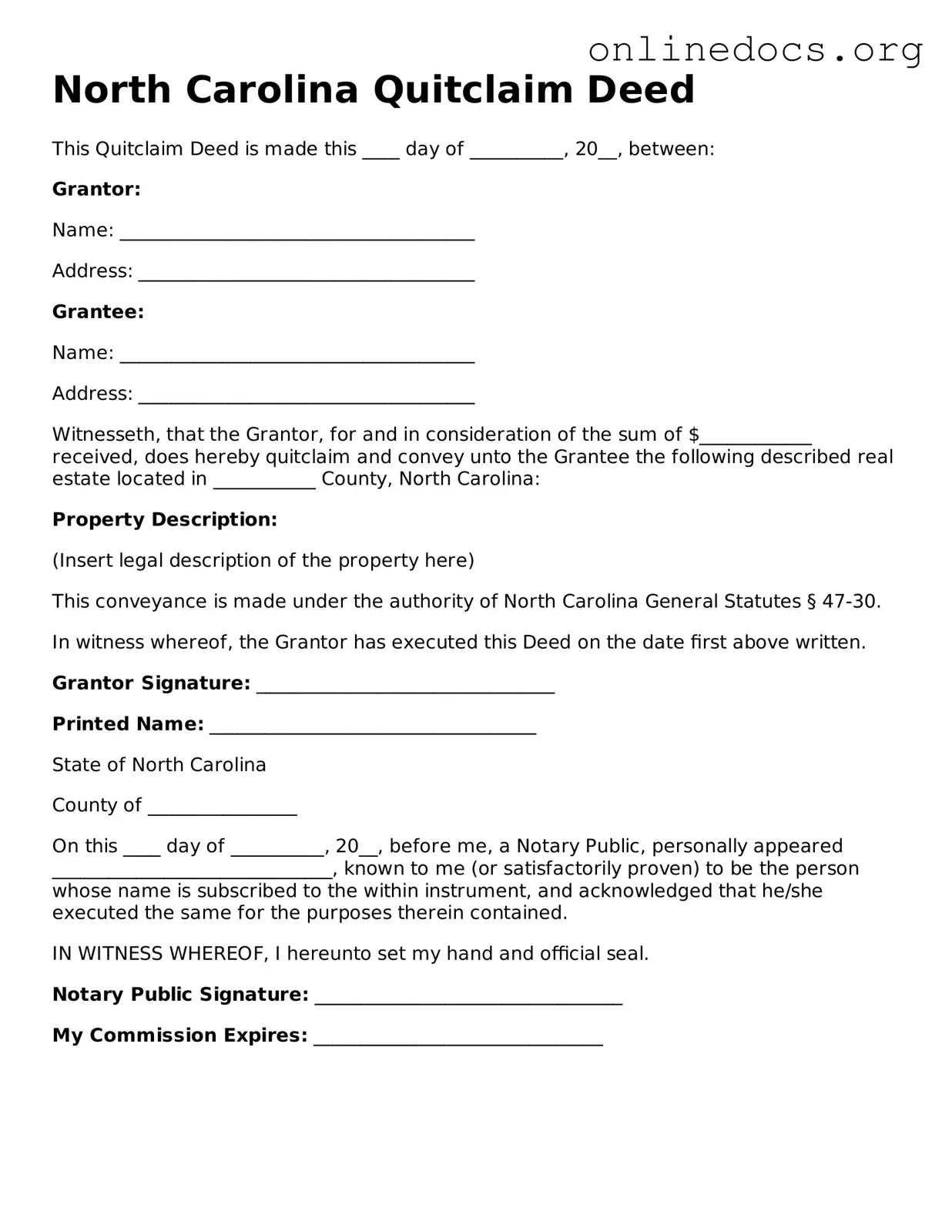A Warranty Deed is a document that provides a guarantee from the seller to the buyer regarding the title of the property. Unlike a quitclaim deed, which transfers ownership without any warranties, a warranty deed assures the buyer that the seller holds clear title to the property and has the right to sell it. This document protects the buyer from any future claims against the property, ensuring peace of mind in the transaction. The warranty deed is often used in traditional real estate transactions where the buyer seeks assurance of ownership free from encumbrances.
A Bargain and Sale Deed is similar to a quitclaim deed in that it transfers ownership of property, but it also implies that the seller has some interest in the property being sold. While it does not provide the same level of protection as a warranty deed, it suggests that the seller has the right to convey the property. This type of deed is often used in foreclosure sales or tax sales, where the seller may not be able to offer full guarantees about the title but still wishes to transfer ownership.
A Special Purpose Deed, often used for specific transactions, shares some characteristics with a quitclaim deed. This document is typically employed in situations such as transferring property between family members or in divorce settlements. Like a quitclaim deed, a special purpose deed may not provide extensive warranties about the title, but it facilitates the transfer of ownership in a straightforward manner, reflecting the unique circumstances of the transaction.
A Trustee’s Deed is used when property is transferred by a trustee, often in the context of a trust. This type of deed may resemble a quitclaim deed in that it can convey property without warranties. However, a trustee’s deed is executed under the authority of a trust agreement, which may provide some level of assurance about the legitimacy of the transfer. It is particularly relevant in estate planning and probate situations, where the transfer of property must adhere to specific legal requirements.
A Deed of Gift is a legal document that transfers property without any exchange of money. Similar to a quitclaim deed, it conveys ownership without warranties. This type of deed is often used when property is given as a gift to a family member or friend. While it does not guarantee the title, it is a straightforward way to transfer ownership and is often accompanied by a declaration of intent to gift the property.
Understanding the nuances of real estate documents is crucial for any buyer or seller. For those looking to rent residential property in California, it's essential to know the significance of lease agreements, which clearly delineate the expectations and responsibilities of both parties involved. To ensure that you are fully informed and legally protected, consider reviewing and completing the necessary forms, such as the one available at californiapdfforms.com/residential-lease-agreement-form/.
An Affidavit of Heirship is a document that establishes the heirs of a deceased person and can be used to transfer property ownership without a formal probate process. This document can work in conjunction with a quitclaim deed, as it helps clarify who has the right to inherit the property. While it does not transfer ownership itself, it can serve as a supporting document to validate the transfer of property through a quitclaim deed, particularly in cases where the original owner has passed away.
A Leasehold Deed is a document that conveys a leasehold interest in a property rather than full ownership. While it differs from a quitclaim deed in terms of the rights being transferred, it shares the characteristic of being a simple method of conveying interests in real estate. A leasehold deed allows the lessee to use the property for a specified term, and like a quitclaim deed, it may not provide extensive assurances about the condition of the title, focusing instead on the terms of the lease agreement.
